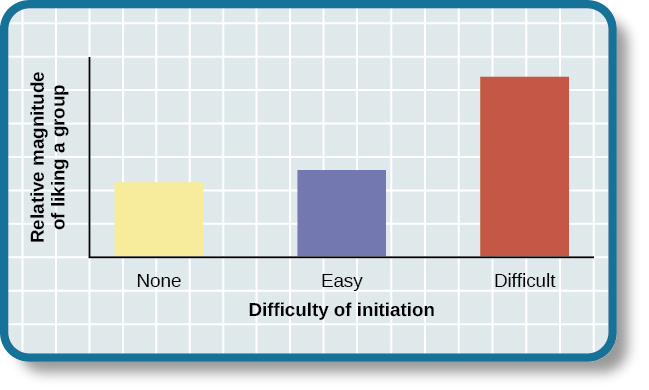| << Chapter < Page | Chapter >> Page > |

Similar effects can be seen in a more recent study of how student effort affects course evaluations. Heckert, Latier, Ringwald-Burton, and Drazen (2006) surveyed 463 undergraduates enrolled in courses at a midwestern university about the amount of effort that their courses required of them. In addition, the students were also asked to evaluate various aspects of the course. Given what you’ve just read, it will come as no surprise that those courses that were associated with the highest level of effort were evaluated as being more valuable than those that did not. Furthermore, students indicated that they learned more in courses that required more effort, regardless of the grades that they received in those courses (Heckert et al., 2006).
Besides the classic military example and group initiation, can you think of other examples of cognitive dissonance ? Here is one: Marco and Maria live in Fairfield County, Connecticut, which is one of the wealthiest areas in the United States and has a very high cost of living. Marco telecommutes from home and Maria does not work outside of the home. They rent a very small house for more than $3000 a month. Maria shops at consignment stores for clothes and economizes where she can. They complain that they never have any money and that they cannot buy anything new. When asked why they do not move to a less expensive location, since Marco telecommutes, they respond that Fairfield County is beautiful, they love the beaches, and they feel comfortable there. How does the theory of cognitive dissonance apply to Marco and Maria’s choices?
In the previous section we discussed that the motivation to reduce cognitive dissonance leads us to change our attitudes, behaviors, and/or cognitions to make them consonant. Persuasion is the process of changing our attitude toward something based on some kind of communication. Much of the persuasion we experience comes from outside forces. How do people convince others to change their attitudes, beliefs, and behaviors ( [link] )? What communications do you receive that attempt to persuade you to change your attitudes, beliefs, and behaviors?

A subfield of social psychology studies persuasion and social influence, providing us with a plethora of information on how humans can be persuaded by others.
The topic of persuasion has been one of the most extensively researched areas in social psychology (Fiske et al., 2010). During the Second World War, Carl Hovland extensively researched persuasion for the U.S. Army. After the war, Hovland continued his exploration of persuasion at Yale University. Out of this work came a model called the Yale attitude change approach , which describes the conditions under which people tend to change their attitudes. Hovland demonstrated that certain features of the source of a persuasive message, the content of the message, and the characteristics of the audience will influence the persuasiveness of a message (Hovland, Janis,&Kelley, 1953).

Notification Switch
Would you like to follow the 'Psychology' conversation and receive update notifications?